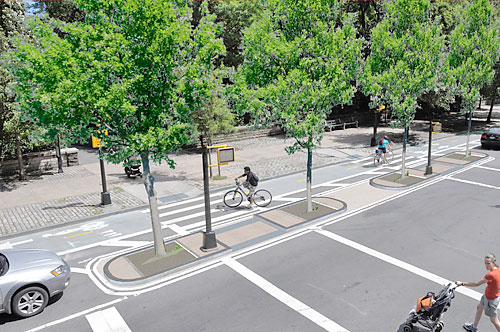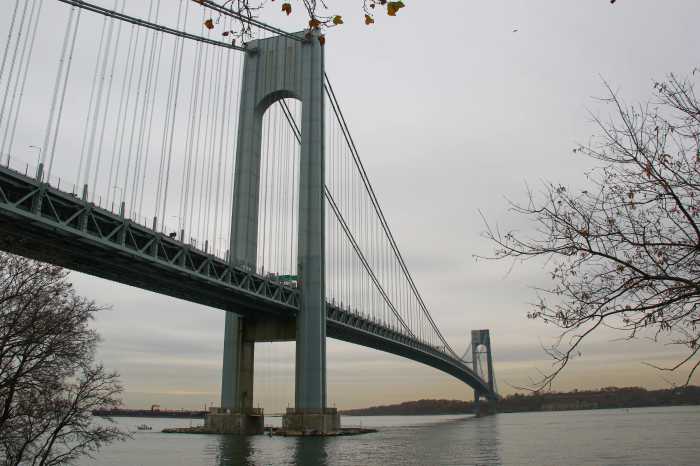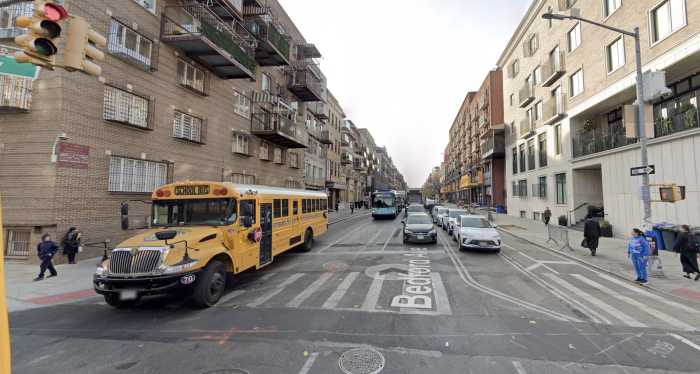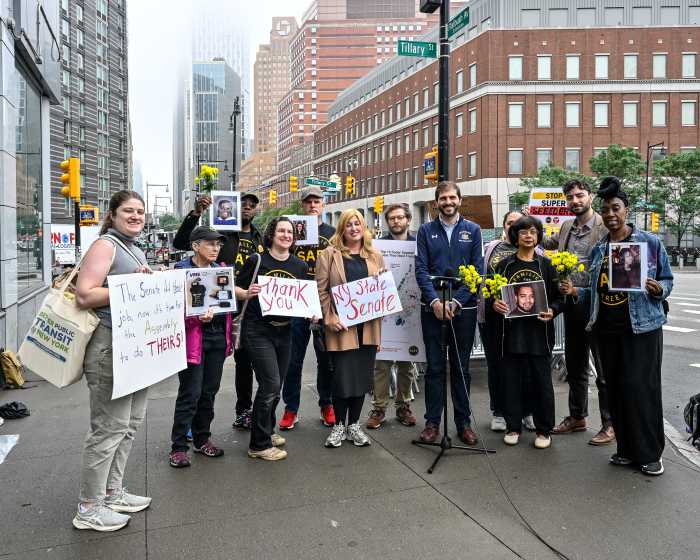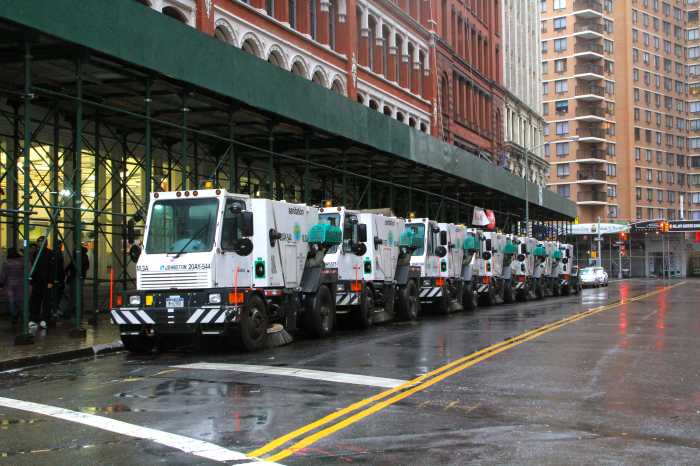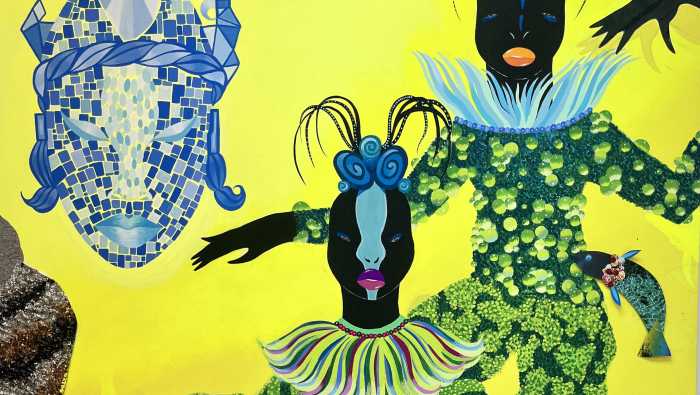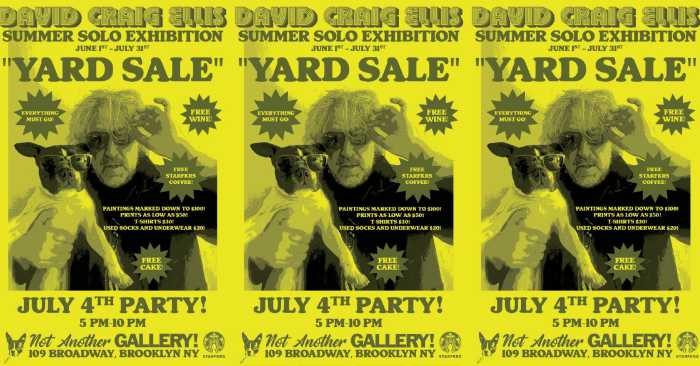BY NATALIE O’NEILL
New tweaks to the Prospect Park West bike lane will lead to confusion and crashes, the community board that first proposed the lane now says.
The city will rejigger locations of several crosswalk signals, moving them to new “pedestrian islands” where cyclists can’t see them, members of Community Board 6 said before voting on Sept. 14 against that detail in the city’s bike lane makeover.
“Why do it?” said James Bernard, a longtime bike lane opponent and board member. “We’re supposed to be preserving the street’s character — and we’ve already been the guinea pig enough.”
And lane supporters joined Bernard, though for a different reason: The bike lane has been so successful in reducing accidents, that making changes to the “Walk/Don’t Walk” signs is “unnecessary.”
The board — which proposed the controversial bike lane as a traffic-calming measure in 2008 — did ask the Department of Transportation for some minor tweaks such as rumble strips to alert cyclists to slow down, a Ninth Street drop off area reconfiguration, more light signals along with raised pedestrian islands.
But the city went further, adding islands and reconfigured crosswalk signals at nine locations, including at First, Fifth and Ninth streets. The city plan also features “cobblestone-edged” tree pits that, once built, will separate the bike lane from vehicle traffic, along with islands located about 11 feet from the curb — much like the ones on Ninth Avenue between West 23rd and West 31st streets in Manhattan.
“Signals like that are systematically ignored by cyclists — you’re not going to change their behavior by moving these crosswalks,” said Mark Shames of Community Board 6.
A few spoke in favor of the signs — noting it would make the street less chaotic.
“You’re not dealing with those guys in Spandex who don’t stop for anyone,” said Nica Lalli. “It’s mostly families out for a bike ride — and I think this would make the lane easier to use.”
Department of Transportation spokesman Seth Solomonow echoed Lalli.
“We believe this change makes sense, from an engineering standpoint, to enhance safety,” he said in a statement.
Neighbors like Bernard were not convinced. “There’s just no reason to do it,” he said.


